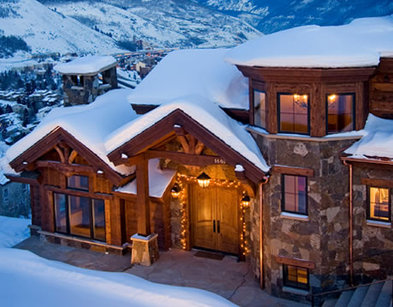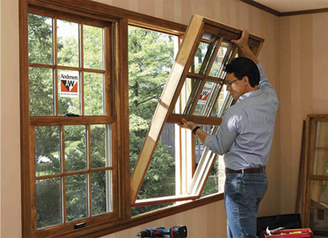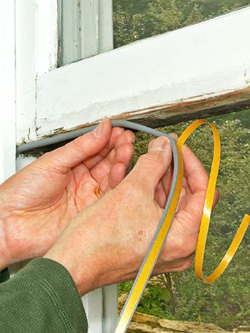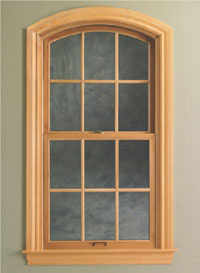By Randy Covington Simply put windows...are what you put in the holes in your house. Think about that. Holes in your house. It seems to me that if you are going to have holes in your house, you want a very good quality window to prevent the those holes from letting the conditioned air out and the cold air in and rain from destroying the interior of your house.
Their are three basic categories of windows: I will discuss wood windows in particular in this post and specifically clad windows as very few people wish to put unclad windows in their house due to the added maintenance of having to paint them every 3-5 years.Wood windows are made of wood, (primarily pine) but are sold primarily with a cladding on the exterior to reduce the exterior maintenance requirements that attach to all windows (no painting). The cladding is typically Aluminum, however their are increasing options in this regard in the form of extruded and sheet noble metal claddings such as Bronze, Copper and Zinc.
The last 3 materials are generally sold only on custom windows which are very expensive and typically can only be justified on hard budgets of over $ 400 PSF. If your like me (and most others) you will not be building a home in this range.
However, there are a few copper alternatives manufactured by commodity window manufacturer's that might in fact fit into your budget. I will discuss these in greater detail in a later post. Anyway back to clad wood windows.
The best known names in this field (due to huge marketing budgets) are Anderson, Pella, Weathershield, Jeld-Wen and Marvin. They probably comprise about 65% market share between them and each of them have their own specific advantages and disadvantages. Only a careful review of the features and benefits of each window will reveal what is best for your project. A brief description of the features that I consider important when reviewing the various windows follows below:
Anderson - unique in that the wood window made by Anderson is clad with a PVC vinyl cladding. The cladding is bound to the wood substrate with an adhesive type mechanism which has shown effective, but in some extreme climates worries me that it could detach.
The window is backed by a top-notch warranty and I have anecdotal experience that the company takes its warranty obligations seriously. A good thing indeed. There was manufacturing problem with the welding of the corners of the vinyl cladding some years back on a lot of windows that made its way to Colorado. I was selling Anderson windows at that time and know that the Company spent a very healthy sum of money to find the windows with the problem and fix them before the owners knew there was a problem. It is not that usual to see this kind of pro-active attitude in any company.
The other features of the window include a proprietary glazing system that will require that you will always have to go the Anderson for replacement and a reticence by the company to put breather tubes in their glazing system (critical in high altitudes). Anderson is the largest manufacturers of windows (under one brand) in the U.S. Anderson sells their product through a dealer network composed of lumber yards, window dealers and home-improvement contractors. Anderson mow also sells a line of composite windows made from the waste wood derived from manufacturing its wood
windows,
Jeld-Wen - sells wood windows under a variety of brand names including
Jeld-Wen, Pozzi, Wilmar and a few others. All of these brands were more or less regionally well-known brands and Jeld-Wen has made a weak effort to unify the brands either from a marketing perspective or from a manufacturing perspective from what I can tell. The various brands have quality reputations that you will have to judge for yourself. The Jeld-Wen moniker is a holding company for a broad range of construction products that make Jeld-Wen a very large presence in the construction products category, a great many of them in the commodity category. They are an excellent manufacturer.
Marvin - is an old line family owned firm that manufactures a broad line of wood windows and composite windows. One of the distinguishing features of the
Marvin brand is that the aluminum clad version is actually an extruded aluminum sash with a Wood insert to the interior. This scenario is also a feature of the Weathershield line and the Window Technologies line in the Midwest. This method makes for a more rigid sash, and eliminates the possibility of oil-canning and reduces the chances of moisture forming under the cladding. It also places a barrier dead air space underneath the sash which should add somewhat to its performance in cold climates.
Pella - Pella manufacturers windows clad and unclad in Iowa and markets them through primarily authorized distributors although they have recently started to distribute their builder grade line through
Home Depot. The
Pella product is distinguished by the availability of buit-in roll-down insect screens, between-the-glass window blinds and and an exclusive distributorship for the clearest window screening material made in the United States.
Pella's clad system is roll-formed and loosely attached which can cause problems such as "oil-canning" in very hot climates and the possibility of condensation forming underneath the cladding in high-humidity locales leading to rot of the underlying sash. Otherwise Pella makes good quality window. Pella now manufactures a line of composite windows which show promise from a performance perspective.
These are the (4) largest manufacturers of wood windows in the United States based on market share. The relative value of their products is affected by a range of factors that will make your choice dependent on your specific needs. There are also a great many regional manufacturers that make good quality windows that will be equally prevalent in your locale. I will discuss those in another post.
My personal selection for the highest quality wood clad window available would be Loewen Windows. Loewen is a Canadian company that is based in the far Northwest so I am not sure you will find them widely distributed in your area of the country. A few things that distinguish the design of the Loewen is that it is built out of Vertical Grained Doug Fir which is a moderately durable wood (better than pine) and is more beautiful than pine if you are staining the interior.
About the Author Randy Covington has over 30 years experience in construction. Formerly Licensed as a Residential Builder in Florida and an unlimited General Contractor in South Carolina, he has built small commercial and residential projects in the Southeast and West. Randy has spent the last 15 years selling construction products from lumber to custom windows with Bronze and Copper cladding to some of the most expensive residences on the planet. If you have question on constructing your own home or on windows, or need to source something really unusual for your home, you may reach him at
www.myhomespace.biz Article Source:
http://EzineArticles.com/?expert=Randy_Covington 




 RSS Feed
RSS Feed